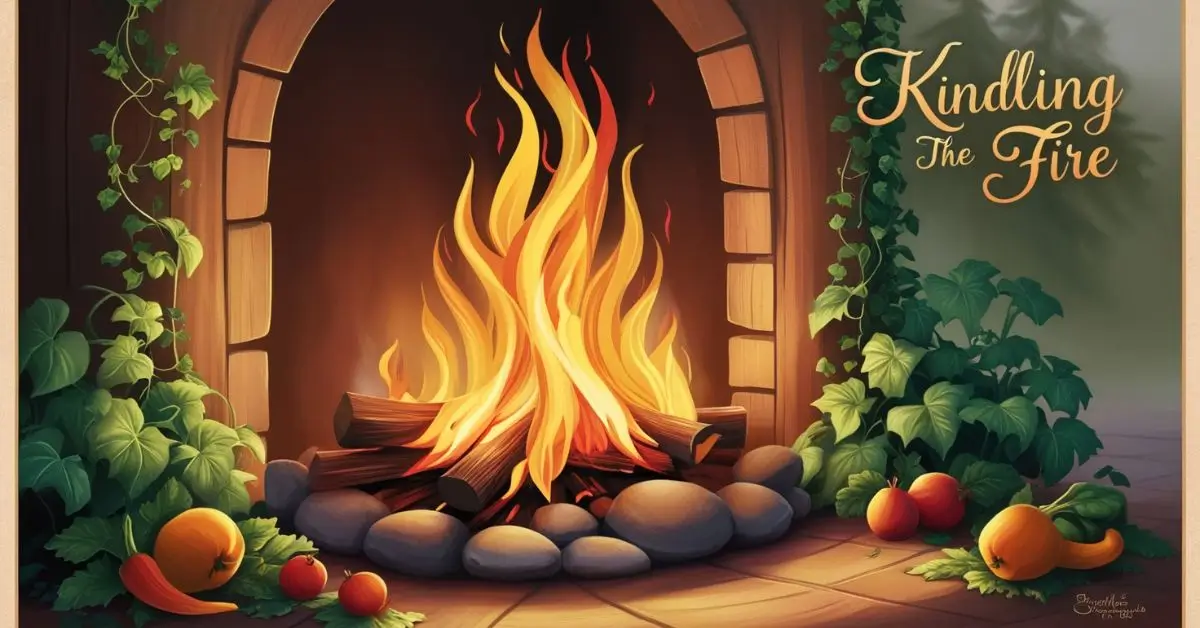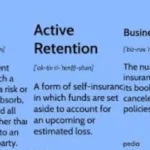Fire has always held a powerful position in human history. It is synonymous with life, transformation, and power. The phrase “kindling a fire” draws on these connotations, often used as a metaphor for initiating passion, growth, and development in various contexts. Much like the physical act of starting a fire, where every small step matters, the same process can be applied to personal or organizational growth, creativity, relationships, and even survival in both literal and figurative senses.
The act of kindling a fire is a delicate process. It starts with small sparks, requiring care and attention, gradually growing into a larger flame capable of providing warmth, protection, or even the foundation for larger endeavors like cooking or creating. This metaphorical approach to understanding growth or any journey that requires patience and persistence can be applied to various aspects of life, work, and personal development. In this article, we will explore the analogy of kindling a fire in various dimensions – personal growth, creativity, relationships, leadership, and organizational development – to see how the metaphor serves as a powerful tool for understanding and navigating life.
Chapter 1: The Basics of Fire: Understanding the Fundamentals
Before diving into how this analogy applies to various aspects of life, let’s start with understanding how a fire is physically kindled. There are basic steps involved in kindling a fire:
- Gathering the Material: You need tinder (dry, easily combustible materials like paper or dry leaves), kindling (slightly larger materials like twigs or sticks), and fuel (logs or wood that will burn for longer periods).
- Lighting the Spark: Starting a fire requires an initial spark, which could be from a match, a lighter, or friction. This first spark is often the hardest part of starting a fire.
- Fanning the Flames: Once the initial flame is caught, it needs to be nurtured. A fire won’t sustain itself unless it is slowly fed more fuel and given the right amount of air. Too much air, and the fire burns out. Too little, and it suffocates.
- Maintaining the Fire: Finally, once the fire is lit, it needs to be sustained. This involves constantly adding fuel, making adjustments, and monitoring the flames to prevent it from going out or growing too large.
Now, let’s see how these steps apply to various aspects of life.
Chapter 2: Kindling a Fire of Personal Growth
Personal growth, like starting a fire, begins with a spark of inspiration. Whether it’s a desire for self-improvement, learning a new skill, or overcoming challenges, the spark needs to be strong enough to ignite action. Too often, individuals feel the spark but fail to turn it into a sustainable flame of growth because they don’t understand the steps required.
Gathering the Right Resources: The Tinder of Self-Improvement
In the same way that dry leaves or small sticks are needed to start a physical fire, personal growth requires certain resources. These can be books, mentors, courses, or even introspection. Without the right resources, it’s nearly impossible to begin growing. For instance, if someone wishes to improve their physical health, they might start by gathering information on diets, workout plans, and healthy habits. The initial spark may come from an external event, like seeing a friend transform their body or realizing that a sedentary lifestyle is taking a toll on health.
Igniting the Flame: Motivation
The spark of motivation, like striking a match, often comes from internal or external stimuli. It could be the realization that something needs to change or an external influence that pushes you towards action. However, motivation alone is fleeting. Much like a fire that goes out without proper kindling, motivation needs to be fanned and nurtured to turn into lasting change.
Fanning the Flames: Commitment and Consistency
Consistency is the fuel that keeps the fire of personal growth burning. Just as you need to continuously add small pieces of wood to build up a fire, small, consistent actions build up personal development. Without consistency, the flame dies. In this analogy, the embers of effort and action grow into long-lasting habits over time. For example, a new exercise routine might start with small, daily efforts that are slowly built upon.
Sustaining the Fire: Resilience
Once personal growth starts to catch on, it requires resilience to sustain it. Challenges are inevitable. In the same way that unexpected weather conditions might challenge the physical flame, life’s ups and downs test the metaphorical fire of personal development. In these moments, it’s crucial to nurture and protect the flame, reinforcing it with discipline and resilience to keep it burning.
Chapter 3: Kindling Creativity: The Artist’s Fire
Creativity, too, can be compared to kindling a fire. Many people mistakenly think that creative sparks are sudden and require no further nurturing. However, creativity, like a fire, needs both ignition and persistence.
Gathering Ideas: The Tinder of Inspiration
Artists, writers, and other creators need inspiration to act as their tinder. This can come from external sources like nature, other works of art, personal experiences, or even random observations. Much like collecting dry leaves or twigs, creative individuals gather these ideas, storing them until they are ready to ignite.
Lighting the Spark: Moments of Inspiration
For most creative minds, there comes a moment when all the collected ideas suddenly coalesce into a spark of inspiration. This might happen unexpectedly—while reading, walking, or even dreaming. However, like any fire, the initial spark is fragile. The challenge lies in nurturing this creative energy before it burns out. Many creators experience burnout when they fail to properly manage their creative energy.
Nurturing the Flame: Hard Work and Persistence
Once inspiration strikes, it requires hard work to transform that initial spark into something tangible. Many people stop here, believing that creativity is only about inspiration. However, without continuous effort and practice, the spark fizzles out. The kindling process in creativity is the hard work of drafting, editing, experimenting, and refining ideas until they take shape.
Sustaining the Creative Fire: Breakthroughs and Setbacks
Breakthroughs are like adding large logs to the fire—they keep it burning stronger and for longer. However, every creative process also encounters setbacks. The fire may dim, but the key is to keep adding small bursts of energy—whether through feedback, re-evaluating the work, or taking breaks. True artists and creators understand the ebb and flow of their creative fire, nurturing it through both highs and lows.
Chapter 4: The Fire of Relationships: Building Connections
Building and sustaining relationships, whether personal or professional, can also be understood through the analogy of kindling a fire. Relationships don’t simply spring into full flame—they require attention, care, and nurturing.
Gathering Trust and Vulnerability: The Tinder of Relationships
The tinder for relationships is mutual trust and vulnerability. Just as a fire cannot be kindled without easily combustible material, relationships cannot thrive without trust. Vulnerability acts as the small twigs that help the fire catch; by showing vulnerability, you allow others to open up as well, creating a deeper bond.
Lighting the Spark: Connection
That initial spark in relationships, whether it’s a romantic connection, a friendship, or a professional partnership, happens when two people find common ground. This spark could be a shared interest, a mutual goal, or simply a moment of understanding. Like the first flame, it needs to be fanned and fed.
Fanning the Flames: Communication and Effort
Sustaining a relationship, much like a fire, requires regular effort. Communication is the oxygen that allows the flames to grow. Without communication, misunderstandings can snuff out the fire of connection. Additionally, consistent effort is required, such as acts of kindness, empathy, and support.
Maintaining the Fire: Dealing with Conflicts
In relationships, conflicts are inevitable. The fire may flicker or even diminish when faced with challenges. However, with proper conflict resolution—through patience, understanding, and compromise—the relationship can continue to grow. Like a well-maintained fire, a relationship requires constant attention, with each person adding fuel in the form of love, respect, and shared experiences.
Chapter 5: Kindling Leadership and Organizational Growth
Leadership is often compared to fire—a leader who can spark passion, commitment, and vision in their followers. However, just like a fire, leadership is not simply about igniting passion, but about sustaining and growing it over time.
Gathering Resources: The Tinder of Vision
A strong vision is the tinder for any organization or leadership journey. Without a clear vision, the fire of leadership cannot be kindled. Leaders gather resources—knowledge, experience, and a team—much like gathering the materials to start a fire.
Igniting the Spark: Inspiring the Team
Leaders ignite the spark by inspiring their teams. This could be through clear communication, strong values, or creating a sense of purpose. However, just like a physical fire, leadership requires more than a momentary spark of inspiration. The fire must be nurtured and developed into something sustainable.
Fanning the Flames: Teamwork and Collaboration
Successful leaders understand the importance of teamwork and collaboration. Much like fanning the flames of a fire, a leader must create an environment where the team can grow together, contribute their strengths, and support each other.
Sustaining the Fire: Adaptability and Innovation
In today’s fast-paced world, leaders and organizations need to constantly adapt to changing environments. The ability to innovate and pivot when necessary is akin to adding new fuel to the fire, ensuring it burns longer and brighter. Organizations that fail to adapt often find their fire dwindling.
Conclusion: The Eternal Fire
The analogy of kindling a fire can be applied to various aspects of life, from personal growth and creativity to relationships and leadership. The process of gathering resources, igniting a spark, and nurturing the flame can provide a powerful framework for understanding how to initiate and sustain growth in every aspect of life. Just like fire, once kindled, the potential for warmth, protection, and transformation is endless, provided you continue to care for it.
Kindling a fire is both an art and a science. It requires patience, effort, and the ability to adjust to external conditions. Similarly, in life, success in personal growth, creativity, relationships, and leadership lies not in the initial spark but in the ongoing nurturing and care. So, whether you’re starting a new project, building a relationship, or guiding a team, remember that the key to success lies in kindling the fire—and keeping it burning.











